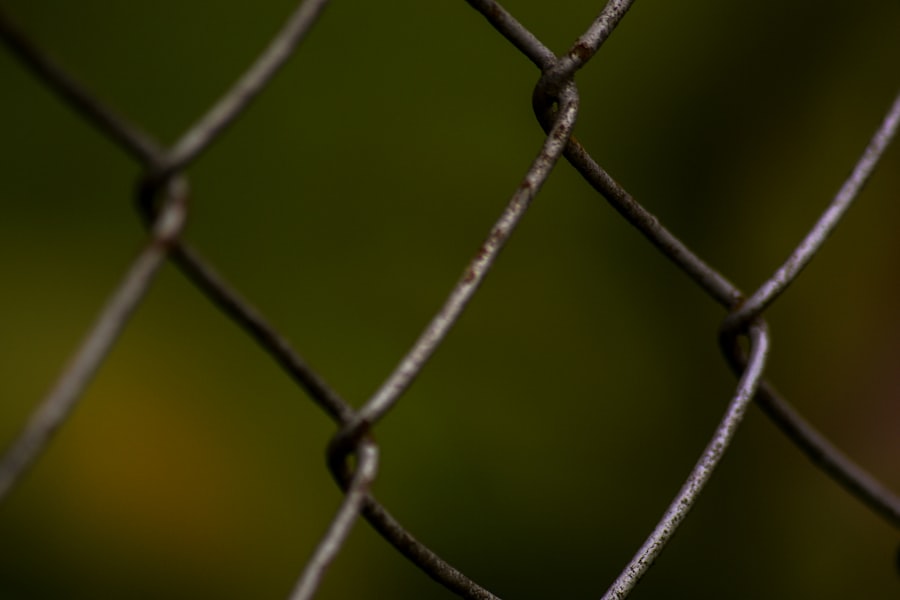Free-range chickens exhibit natural behaviors that are essential to their well-being and survival. These birds are inherently curious and constantly explore their surroundings in search of food, water, and shelter. Chickens are highly social animals that typically move as a cohesive flock, with individuals following the lead of others when new foraging areas are discovered.
Chickens are omnivorous and opportunistic feeders, consuming a diverse diet that includes plants, insects, and small animals. Their instinctive scratching and pecking behaviors, while beneficial for foraging, can potentially damage gardens, lawns, and flower beds. It is important to note that these behaviors are innate and cannot be completely suppressed.
Effective management of free-range chickens requires an understanding of their natural behaviors and instincts. Rather than attempting to eliminate these behaviors, it is more practical to implement strategies that redirect and manage them in a way that benefits both the chickens and their environment. This approach ensures the birds’ welfare while minimizing potential conflicts with human-managed landscapes.
Table of Contents
- 1 Implementing Physical Barriers to Keep Chickens Out
- 2 Using Natural Deterrents to Discourage Chickens
- 3 Providing Alternative Feeding Areas for Chickens
- 4 Utilizing Scare Tactics to Keep Chickens Away
- 5 Consistently Monitoring and Redirecting Chickens
- 6 Seeking Community Support and Resources for Chicken Management
- 7 FAQs
Key Takeaways
- Free range chickens exhibit natural foraging behavior and may wander into unwanted areas.
- Physical barriers such as fences and netting can effectively keep chickens out of specific areas.
- Natural deterrents like citrus peels, vinegar, and cayenne pepper can discourage chickens from entering certain spaces.
- Providing alternative feeding areas with grains and seeds can redirect chickens away from unwanted areas.
- Scare tactics such as motion-activated sprinklers and noise-making devices can startle chickens and keep them away from specific locations.
- Consistent monitoring and redirection of chickens is necessary to maintain control over their behavior.
- Seeking community support and resources, such as local animal control or agricultural extension services, can provide additional assistance in managing free range chickens.
Implementing Physical Barriers to Keep Chickens Out
Physical Barriers: A Simple yet Effective Solution
One effective way to keep free-range chickens out of specific areas is by implementing physical barriers. This can include installing fences, gates, or netting around gardens, flower beds, and other sensitive areas. The height and material of the barrier should be chosen based on the size and agility of the chickens in the area.
Securing the Barriers
Additionally, it’s important to ensure that the barriers are properly secured to prevent the chickens from finding a way to bypass them. Another option for physical barriers is using chicken wire or mesh to create enclosures for specific areas. This can be particularly useful for protecting vegetable patches or newly planted areas.
Designated Spaces and Regular Maintenance
By creating designated spaces that are off-limits to the chickens, it’s possible to minimize their impact on these sensitive areas. It’s important to regularly inspect and maintain these barriers to ensure their effectiveness in keeping the chickens out.
Using Natural Deterrents to Discourage Chickens

In addition to physical barriers, natural deterrents can also be used to discourage free range chickens from entering specific areas. One common natural deterrent is the use of predator scent or urine around the perimeter of sensitive areas. The scent of predators can trigger a fear response in chickens, causing them to avoid the area altogether.
Additionally, motion-activated sprinklers or noise-making devices can startle the chickens and deter them from entering certain spaces. Another natural deterrent is the use of certain plants or herbs that chickens find unappealing. For example, planting strong-smelling herbs like lavender, mint, or rosemary around sensitive areas can help repel chickens.
These plants not only act as a natural deterrent but also add beauty and fragrance to the surrounding environment. It’s important to regularly replenish or replace these natural deterrents to ensure their continued effectiveness.
Providing Alternative Feeding Areas for Chickens
One effective strategy for managing free range chickens is to provide alternative feeding areas that are away from sensitive spaces. This can be done by creating designated feeding stations or scattering feed in specific locations where the chickens are allowed to forage. By providing a consistent source of food in these areas, it’s possible to redirect the chickens’ foraging behavior away from gardens, lawns, and other sensitive areas.
Additionally, offering a diverse range of food options in these alternative feeding areas can help satisfy the chickens’ natural foraging instincts. This can include scattering grains, seeds, and insects for the chickens to find and consume. By providing a variety of food sources, it’s possible to keep the chickens engaged and occupied in these designated areas, reducing their impact on other parts of the property.
Utilizing Scare Tactics to Keep Chickens Away
Scare tactics can be an effective short-term solution for keeping free range chickens away from specific areas. This can include using visual deterrents such as scarecrows, reflective tape, or balloons with intimidating eyespots. These visual deterrents can startle the chickens and discourage them from entering certain spaces.
It’s important to regularly move and change the placement of these scare tactics to prevent the chickens from becoming accustomed to them. Another scare tactic that can be used is making loud noises or using sudden movements to startle the chickens. This can be done manually or through the use of motion-activated devices that emit loud sounds or bursts of air when triggered by the presence of chickens.
While scare tactics can be effective in the short term, they should be used in conjunction with other long-term management strategies for optimal results.
Consistently Monitoring and Redirecting Chickens

Understanding Chicken Behavior
Regular monitoring allows farmers to identify areas where chickens are likely to cause damage. This knowledge enables them to take proactive measures to redirect their behavior and prevent damage.
Redirecting Chicken Behavior
One effective way to redirect the behavior of free-range chickens is by using temporary fencing or movable enclosures to limit their access to certain areas at specific times. For example, if chickens are causing damage to a newly planted garden bed, temporary fencing can be used to keep them out until the plants have had a chance to establish themselves.
Temporary Fencing Solutions
Temporary fencing can be a highly effective solution in managing free-range chicken behavior. By limiting access to certain areas, farmers can protect their crops and redirect the chickens’ attention to other areas. Once the plants are more resilient, the fencing can be removed, allowing the chickens access once again.
Seeking Community Support and Resources for Chicken Management
Managing free range chickens can be a community effort, especially in areas where multiple properties are affected by their presence. Seeking support from neighbors and local resources can help in developing a comprehensive approach to chicken management. This can include sharing information about effective management strategies, pooling resources for physical barriers or deterrents, and coordinating efforts to monitor and redirect chicken behavior across multiple properties.
Additionally, seeking support from local agricultural extension offices or poultry organizations can provide valuable resources and expertise in managing free range chickens. These organizations may offer workshops, educational materials, or even on-site consultations to help property owners develop effective management plans. By working together with the community and accessing available resources, it’s possible to develop a sustainable approach to managing free range chickens that benefits both the chickens and the surrounding environment.
In conclusion, understanding the behavior of free range chickens is crucial in developing effective management strategies. By implementing physical barriers, natural deterrents, alternative feeding areas, scare tactics, consistent monitoring, and seeking community support, it’s possible to minimize the impact of free range chickens on sensitive areas while still allowing them to roam and forage in a controlled manner. With a comprehensive approach to chicken management, property owners can create a harmonious balance between the presence of free range chickens and the preservation of their property’s integrity.
If you’re looking for more tips on keeping free range chickens out of your yard, check out this article on poultrywizard.com. It offers advice on how to build a secure chicken coop to keep your chickens contained and safe.
FAQs
What are free range chickens?
Free range chickens are poultry that are allowed to roam freely and forage for food, as opposed to being confined to a coop or small enclosure.
Why do free range chickens come into my yard?
Free range chickens may come into your yard in search of food, water, or a place to roost. They are natural foragers and may be attracted to the plants, insects, and other potential food sources in your yard.
How can I keep free range chickens out of my yard?
There are several methods to keep free range chickens out of your yard, including installing a fence, using repellents such as motion-activated sprinklers or predator decoys, and removing potential food sources such as fallen fruits or seeds.
Is it legal to keep free range chickens out of my yard?
In most areas, it is legal to take measures to keep free range chickens out of your yard, as long as it does not harm the chickens or violate any local ordinances or regulations.
What are the benefits of keeping free range chickens out of my yard?
Keeping free range chickens out of your yard can help protect your garden, landscaping, and outdoor furniture from damage caused by scratching, pecking, and droppings. It can also reduce the risk of disease transmission from chickens to humans or other animals.
Meet Walter, the feathered-friend fanatic of Florida! Nestled in the sunshine state, Walter struts through life with his feathered companions, clucking his way to happiness. With a coop that’s fancier than a five-star hotel, he’s the Don Juan of the chicken world. When he’s not teaching his hens to do the cha-cha, you’ll find him in a heated debate with his prized rooster, Sir Clucks-a-Lot. Walter’s poultry passion is no yolk; he’s the sunny-side-up guy you never knew you needed in your flock of friends!







